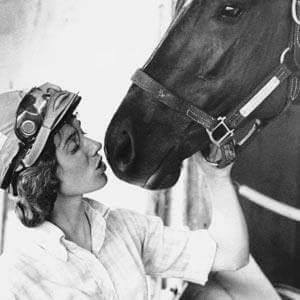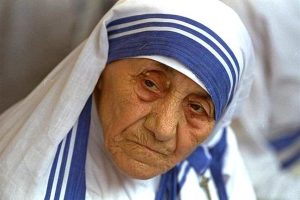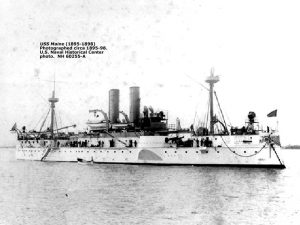The crowd was set. The horse track field was waiting, and the woman who made horse racing history emerged from the stables. The day was like any normal day. She rode out into the crowd, with a horse named Bridle N’ Bit. The crowd was raging in criticism when they saw her. This person was Diane Crump who was attempting to be the first woman jockey in American horse racing history. Diane had a passion for being with horses, but she had to do something much more than just be with them. She realized that it was her moment to take her passion and turn it into something more. She wanted to race horses, and her passion for it is what led her to become the first female jockey in American racing history.
Diane Crump seemed to always love being around horses. Even in her earliest days in Milford, Connecticut, she was always drawn to the stables nearby.1 It was at an early age that her love for horses was something that naturally came to her and had no explanation whatsoever as to why. When she was thirteen, her family moved to Florida, and there she joined a riding club. She also managed to get a job on a thoroughbred farm, where she learned the basics of riding. On the farm, she also learned step by step how to breed horses. Looking back on that time in her life, Diane recalled, “The more I did, the more I loved it.” However, what she wanted to do was to be able to take her horse-riding to another level and be part of the high profile commercialized sport of flat racing.2 Flat races are the contests of speed between two or more horses. Those horses are generally thoroughbreds, ridden by jockeys on specially built tracks on the range of distances usually from 440 yards to 11/2 miles. This sport encompasses what is technically termed horse racing, and that is what Diane saw in her future.3
During the 1940s, however, it was not only uncommon for women to be jockeys, but it was even illegal at the time. That is, until 1948, when a woman named Kathy Kushner pushed the legal question about women becoming jockeys to court. Kathy Kushner luckily was able to win her desire and made it happen. But Diane surely found out that many people did not believe that women had any place to be on the track.4
Luckily, Diane was able to meet with a female trainer named Mary Kiem. Mary Kiem was one of the trainers who decided that Crump was a good enough jockey to ride on a filly named Merr E. Indian. However, Merr E. Indian did not “draw in,” meaning her name was not yet chosen to race.5 Once she had noticed that her name was not yet chosen, she was determined to wait for the day to arrive.
The day finally came. February 7, 1969. On this day, Diane Crump stepped into the spotlight. This day changed her life and her determination as she finally became the first woman to ever compete as a professional jockey in a pari-mutuel race in the United States.6 This was an opportunity for her to show what she could do. All she ever wanted to do was to be able to ride horses. Leading towards this special day for Diane, she knew soon enough that her first race would be with that horse named Bridle ‘N Bit.7 Diane Crump felt the excitement and recalled, “I knew in my heart I was ready.”8 As Diane knew about the race, she quickly went to the jockey store to buy her stuff. She just could not believe that her moment had arrived. Diane was so surprised that she said, “It happened so fast and out of the blue.”9

Upon her arrival at Florida’s Hialeah Park, some jockeys dropped out in protest, but that was no problem due to trainers being able to find replacements. After trainers were able to find replacement jockeys, the wife of a trainer who owned the horse Bridle N’ Bit, told reporters that she had said, “Put that girl on or I’ll get another trainer.”10 She knew that this was serious. However, she did not care for what was to come. All she knew was that it was her moment to ride on a horse and race. Then as she began to prepare herself for the race, she used a horseman office close to a saddling paddock. That would be her temporary jockey’s room. Once she finally knew where she would get ready, she made her way towards the crowd. However, before it was time for Diane to make her way towards the crowd, she was escorted by the police. While she was escorted by the police, Diane said that she had noticed that there were around 5,000 people in the crowd.11 In that crowd of 5,000 people, she had noticed that they were not fans yet, and her response towards the crowd was, “The hecklers were yelling: ‘Go back to the kitchen and cook dinner.'”12
She knew that this was the mentality of the times. All she could say was, “Come on people this is the 1960’s!”13 Crump knew that people would have negative things to say about her being a jockey, but that did not affect her in any way. In response to it all, she later said, “I just wanted to ride! And the way I felt was great and excited that I was finally allowed to start riding.”14 She simply explained that all she ever wanted was to be able to get into and run a good race.

She made her way out towards the raging crowd and onto the track; she managed to get her horse into a good position. Having a good position, she felt the excitement of riding. It was the moment of truth that she had been waiting for all along. Diane Crump not only managed to get a good position for her horse, but also, when the race began, her horse broke really well.15 Diane Crump’s horse broke so well that it led her towards beating two or three horses so that she might finish in the 7th or 8th place.16 Diane had been super excited and did not care if she did not win. All Diane ever cared about was that she was given a grand opportunity to race a horse. She was also happy with the result of being able to accomplish what she wanted as her biggest frustration was not being able to find horses to race. However, on February 7, 1969, she made history and succeeded in becoming the first woman jockey to ever ride in a pari-mutuel race.

After the year of her first race, many women joined her in riding and winning races. This event sparked a movement for women to be able to race, but it also led Diane Crump to great things in life. In 1970, she was the first to ride in the Kentucky Derby. Diane could not believe it, and said, “I’d never ridden in a field that big and had seen a crowd so amazing and excited.”17 Diane Crump was so elated, that she said, “what stood out to me that day was that I won the opening race on the Derby day card.”18 Finally, she raced her last race in 1989. Throughout her riding career, she had suffered from a number of hurtful injuries, such as a broken leg, an ankle, and even ribs. However, this did not mean that this was the last of her. Diane Crump acknowledged, “I would work through the pain and give it my best shot.”19 Diane was not the person to give up very easily. Her career was not over. She was able to continue doing what she loved, but just not in the same way. After recovering, she went back to training horses and galloping again. Diane knew that it was time to hang her tack, but she did not finish from there. All her experience and passion soon led her to start her own horse sales company called Diane Crump Equine Sales. Diane Crump now is a successful business person who sells horses for show, and she stays very busy seven days a week. Diane Crump made it possible for women to be jockeys and had a unique legacy. Diane had a unique legacy and wanted people to know that she did not care about fame. Diane Crump recalled, “My only legacy was that I wanted to be able to know I have helped other people.”20 Diane made that possible through her passion and her love for horses.
- Women in World History: A Biographical Encyclopedia, 2002, s.v. “Women in World History.” ↵
- Diane Crump, interview by Kelsey Sanchez, San Antonio TX, September 25, 2019. ↵
- Horse Racing, 2018, s.v. “Horse Racing.” ↵
- Diane Crump, interview by Kelsey Sanchez, San Antonio TX, September 25, 2019. ↵
- Eliza McGraw, “The Kentucky Derby’s First Female Jockey Ignored Insults and Boycott Threats. She Just Wanted to Ride,” The Washington Post Online, May 4, 2019. https://www.washingtonpost.com/history/2019/05/04/kentucky-derbys-first-female-jockey-ignored-insults-boycott-threats-she-just-wanted-ride/. ↵
- “Diane Crump – Alchetron, The Free Social Encyclopedia.” Alchetron.com, June 23, 2018.. https://alchetron.com/Diane-Crump ↵
- Eliza McGraw, “The Kentucky Derby’s First Female Jockey Ignored Insults and Boycott Threats. She Just Wanted to Ride” The Washington Post. WP Company, May 4, 2019. https://www.washingtonpost.com/history/2019/05/04/kentucky-derbys-first-female-jockey-ignored-insults-boycott-threats-she-just-wanted-ride/. ↵
- Diane Crump, interview by Kelsey Sanchez, San Antonio TX, September 25, 2019. ↵
- Diane Crump, interview by Kelsey Sanchez, San Antonio TX, September 25, 2019. ↵
- Eliza McGraw, “The Kentucky Derby’s First Female Jockey Ignored Insults and Boycott Threats. She Just Wanted to Ride.” The Washington Post. WP Company, May 4, 2019. https://www.washingtonpost.com/history/2019/05/04/kentucky-derbys-first-female-jockey-ignored-insults-boycott-threats-she-just-wanted-ride/. ↵
- Diane Crump, interview by Kelsey Sanchez, San Antonio TX, September 25, 2019. ↵
- McKenzie Sheena, “Jockey Who Refused to Stay in the Kitchen.” CNN. Cable News Network, October 2, 2012. https://www.cnn.com/2012/09/26/sport/diane-crump-first-female-jockey/index.html. ↵
- McKenzie Sheena, “Jockey Who Refused to Stay in the Kitchen.” CNN. Cable News Network, October 2, 2012. https://www.cnn.com/2012/09/26/sport/diane-crump-first-female-jockey/index.html. ↵
- Diane Crump, interview by Kelsey Sanchez, San Antonio TX, September 25, 2019. ↵
- Diane Crump, interview by Kelsey Sanchez, San Antonio TX, September 25, 2019. ↵
- Diane Crump, interview by Kelsey Sanchez, San Antonio TX, September 25, 2019. ↵
- Eliza McGraw, “The Kentucky Derby’s First Female Jockey Ignored Insults and Boycott Threats. She Just Wanted to Ride.” The Washington Post. WP Company, May 4, 2019. https://www.washingtonpost.com/history/2019/05/04/kentucky-derbys-first-female-jockey-ignored-insults-boycott-threats-she-just-wanted-ride/. ↵
- Landman Brian, “Kentucky Derby — Diane Crump Reflects on Her Derby Day.” ESPN. ESPN Internet Ventures. Accessed September 16, 2019. http://www.espn.com/espnw/news/article/6472779/kentucky-derby-diane-crump-reflects-derby-day. ↵
- Diane Crump, interview by Kelsey Sanchez, San Antonio TX, September 25, 2019. ↵
- Diane Crump, interview by Kelsey Sanchez, San Antonio TX, September 25, 2019. ↵



34 comments
Cayden Garcia
I had never heard of Diane Crump before reading your article, but learning about the things she was able to accomplish is truly inspiring. I think it’s interesting how women back in the day were seen as less than their male counterparts, and learning about the women that went against that standard is even more interesting. You did a very good job of explaining Diane’s’ story, her rise to the top is truly amazing!
Destiny Lucero
This was an interesting read, I’ve learned much about horse racing as I am not familiar with it. It seems as nothing stopped Diane Crump from chasing her dreams and she did not care about anyone’s opinion of her. In the 60’s when times were rough for a woman with ambition she powered through, achieved her goals, made history, left a legacy, and became an idol/standard for other women with same interests. I am proud of the women before me, like Diane Crump, who paved the way throughout history.
Alondra Lozano
This was a great article! I know a little about jockey’s but I had never heard about Diane Crump. It is great to know that she opened doors to other women to follow their passion for horses too, because I myself have a passion for them. It is impressing that she focused on the positive things rather than on the negative comments she was getting before she ran her first race.
Kennedy Arcos
This was such an interesting article. Before reading, I had never known of Diane Crump. It was such an amazing and inspiring story, I liked how she remained so positive despite the negativity surrounding her. I didn’t even know that it was illegal for women to race at one point, which is crazy. It’s always exciting to learn about a new woman breaking the ice for other women. Truly inspirational!
Kacey Diaz
I’m not really into horse racing but this article was really interesting to read. I like how the author was able to put in quotes of Crump’s own experience of what it was like becoming the first female jockey to ride. I also didn’t know that at one point it was illegal for a female jockey’s to race so thank you for this article and all its information.
Giselle Garcia
I am impressed by how Diane Crump pushed through her struggles and finally was able to race. I admire that her determination and passion for horse riding helped her achieve her dreams of becoming the first woman horse jockey. I think it’s amazing to learn about women in sports that have broken barriers and become accomplished in the sports industry. She is an inspiration for all who wish to be successful even if people tell you that you can’t do it. This article is unique in that the person it’s about, Diane Crump, was interviewed for it, which adds her firsthand account.
Arsema Abera
This article was really informative in how women were treated in the sports industry back in the day. I have never heard about Diane Crump before but it is refreshing to read about women accomplishing and breaking the ice, specifically about horse riding. She is truly an inspiration and motivational. She teaches us to never give up in your passion, in moving forward, in being strong, courageous and finally always being positive and thinking the best.
Amanda Shoemaker
I’m always excited to read articles about women that ‘broke the glass ceiling’. Having been a woman that worked in an environment with only men I’ve seen this same sexism ‘Go back to the kitchen and cook dinner’. Even now this is still the mindset of a lot of male dominant work centers. Putting this spotlight on women that accomplished things that only males were allowed to accomplish is important for the future of women. I’m surprised that I never heard of Diane Crump given that I grew up right around where the Kentucky Derby takes place. LOVED this article.
Julia Patrick
Before reading this article, I had never heard about Diane Crump. After reading this article I think she has such an amazing story and deserves more recognition. Her passion did not let her stop trying to achieve her dream. She has such an inspiring story and has proved not to let anything, or anyone, stop you from achieving what you want.
Kasandra Ramirez Ferrer
Congratulations on Nomination!!!!. This article is amazing because it tells a story about a person who achieved fame and money but did not care about those things but for doing what they loved and fight or other women to be able to do it. I believe this is such an accurate article since it’s based on the actual words that were said by the main character and the author’s article.